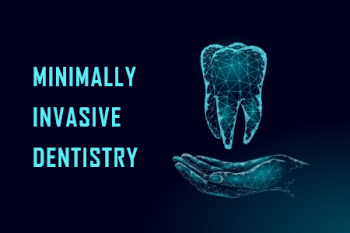Why You Should Care About Minimally Invasive Dentistry
 Maintaining healthy teeth is a common goal, and preventative measures are crucial to avoid tooth decay. Minimally Invasive Dentistry offers a promising approach, emphasizing the preservation of natural tooth structure. Miller Family Dental explores the procedures involved and clarifies the underlying methods.
Maintaining healthy teeth is a common goal, and preventative measures are crucial to avoid tooth decay. Minimally Invasive Dentistry offers a promising approach, emphasizing the preservation of natural tooth structure. Miller Family Dental explores the procedures involved and clarifies the underlying methods.
The three primary methods of Minimally Invasive Dentistry are:
- Early cavity detection
- Minimal tooth preparations
- Air abrasion
EARLY CAVITY DETECTION
While fluoride has significantly reduced surface cavities in children, approximately ninety percent of cavities, or dental caries, occur in the pits and fissures of teeth. These areas are difficult to assess during a standard clinical examination. Dentists often use radiographs for a more in-depth view. However, radiographs can sometimes be inaccurate, creating a dilemma: should dentists remove seemingly sound tooth structure that might be compromised, or wait and risk the decay spreading to the enamel? This often leads to a minimally invasive, hands-on approach where clinicians carefully explore fissures, minimizing the removal of healthy tooth structure.
MINIMAL TOOTH PREPARATIONS
A core principle of Minimally Invasive Dentistry is to preserve dental tissues, ideally without restorative materials. However, these materials are sometimes necessary. Sealants are applied to pits and fissures prone to decay. When decay is present, a preventive resin restoration can be used as a conservative alternative to larger amalgam preparations, which require more extensive removal of healthy tooth structure. Preventive resin restoration involves removing demineralized dentin and enamel and replacing it with a resin-based composite. Unaffected fissures are cleaned and sealed, but not necessarily treated. Clinicians consider the patient’s age and history of tooth decay to determine the appropriate treatment for unaffected areas.
AIR ABRASION
Although developed in the 1940s and widely used in the 1950s, air abrasion has only recently regained popularity in dentistry. Advancements in air abrasion technology have opened new possibilities for clinicians, making it a preferred method for treating carious dental tissues. Air abrasion uses a stream of aluminum oxide particles, propelled by compressed air, nitrogen gas, or bottled carbon dioxide, to remove decayed tooth structure. These particles strike the tooth at high velocity, effectively breaking away decaying tissue and weakened enamel. The particle flow rate varies depending on the air abrasion device, often eliminating the need for anesthetics. After the decayed tissue is removed, the tooth structure is restored with sealants or resin composites. While highly effective, air abrasion is not suitable for severe bacterial tooth decay, making it a key component of Minimally Invasive Dentistry.
Minimally Invasive Dentistry offers a preferred approach to maintaining lifelong dental health and preserving natural teeth. Contact Miller Family Dental today to schedule an appointment!
Disclaimer: The information in this blog is not a substitute for professional medical advice, diagnosis, or treatment. Always consult with a qualified healthcare provider for any questions regarding medical conditions.
